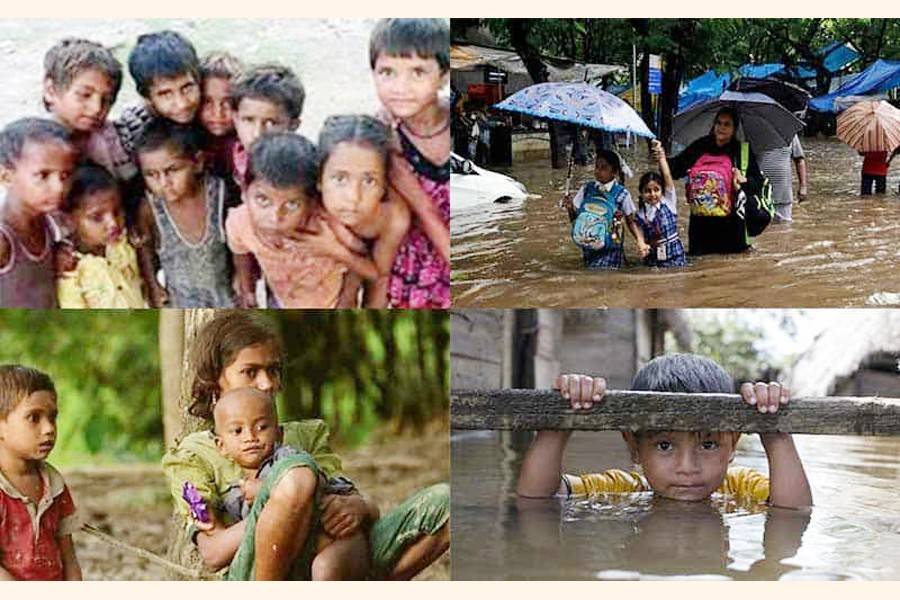
Published :
Updated :

Of the 247 million schoolchildren whose education was disrupted worldwide by climate change last year, 33 million were in Bangladesh, estimates the United Nations International Children's Fund (UNICEF). Among the 77 countries where the learning kids had this misfortune, Bangladesh's share is definitely very high. One schoolchild here for each seven and a half global children endured this educational reversal. This shows that the country's entire school-going children suffered on account of hostile weather because the combined total of school students of the primary and secondary schools in this country is roughly as much as the UNICEF's figure of the affected children.
This is highly concerning because the matter is graver than the cold numerical figures can express. The majority of these young learners had suffered the adversity of the Covid-19 pandemic. No effective measures were taken to help children overcome their educational retrogression or the initial learning gap particularly for the youngest of them. The short-cut ways of promoting students to higher classes only made the matter worse for the majority of them. Even without the adverse environmental impacts, schoolchildren's 'learning poverty', according to the UNICEF, is glaring. 'One in two children cannot read at their grade level and two-thirds are unable to do basic counting after completing primary education'.
In its report titled "Learning Interrupted: Global Snapshot of Climate-related School Disruptions in 2024", first such publication ever to have been produced by the international children's organisation, the UNICEF holds that extreme temperatures and climate disasters not only damage schools but also 'affect students' concentration, memory, and mental and physical health'. So it is a double whammy for the schoolchildren who already struggle with their study on account of poverty and poor teaching at schools. The more vulnerable among them are also deprived of home tutoring by their parents because in most cases the elders are not literate enough to help their children.
According to the UNICEF Children's Climate Risk Index, children in this country find themselves among the most vulnerable and exposed to climate turmoil and environmental hazards anywhere in the world. When in normal conditions, children are deprived of an enabling educational environment, in crisis periods induced by adverse climate their studies become a more daunting proposition. Even some of the talented and promising students, the UNICEF observes, have to drop out on account of natural disasters.
Students in this country, moreover, are subjected to various ludicrous experiments mainly for political reasons. The treatment of young learners as guinea pigs is yet to cease. A sustainable system of quality education for schoolchildren could still not be introduced. Their academic learning follows a tortuous course. Students in villages and of poor family background cannot naturally adapt themselves to such frequent changes because of a lack of support and guidance. Waste of human resource is a natural consequence. Boys either become prematurely wage earners for their family or go off-track, while underage girls are married off as part of off-loading family burden.
Thus the families at the lowest rung of social ladder are further discriminated against with little hope for them to come out of the vicious poverty trap. It is this abject situation that has prompted the UNICEF to appeal to the international climate financing institutions, the private sector and the interim government to collaborate in framing appropriate policies capable of dealing with the educational gap and planning for their implementation. Quality education needs required infrastructure and instruments along with knowledgeable and skilled teachers.
In time of soaring temperature, cyclones, floods or storms, disruption of normal life cannot be avoided. But if there are appropriate contingency measures and preparation in advance, such disruptions can be minimised and overcome within a short time. The same is true for schooling of young learners. So, a special emergency fund for schoolchildren affected by such natural calamities or hostile weather can be created to help them overcome disruption of their education.


 For all latest news, follow The Financial Express Google News channel.
For all latest news, follow The Financial Express Google News channel.